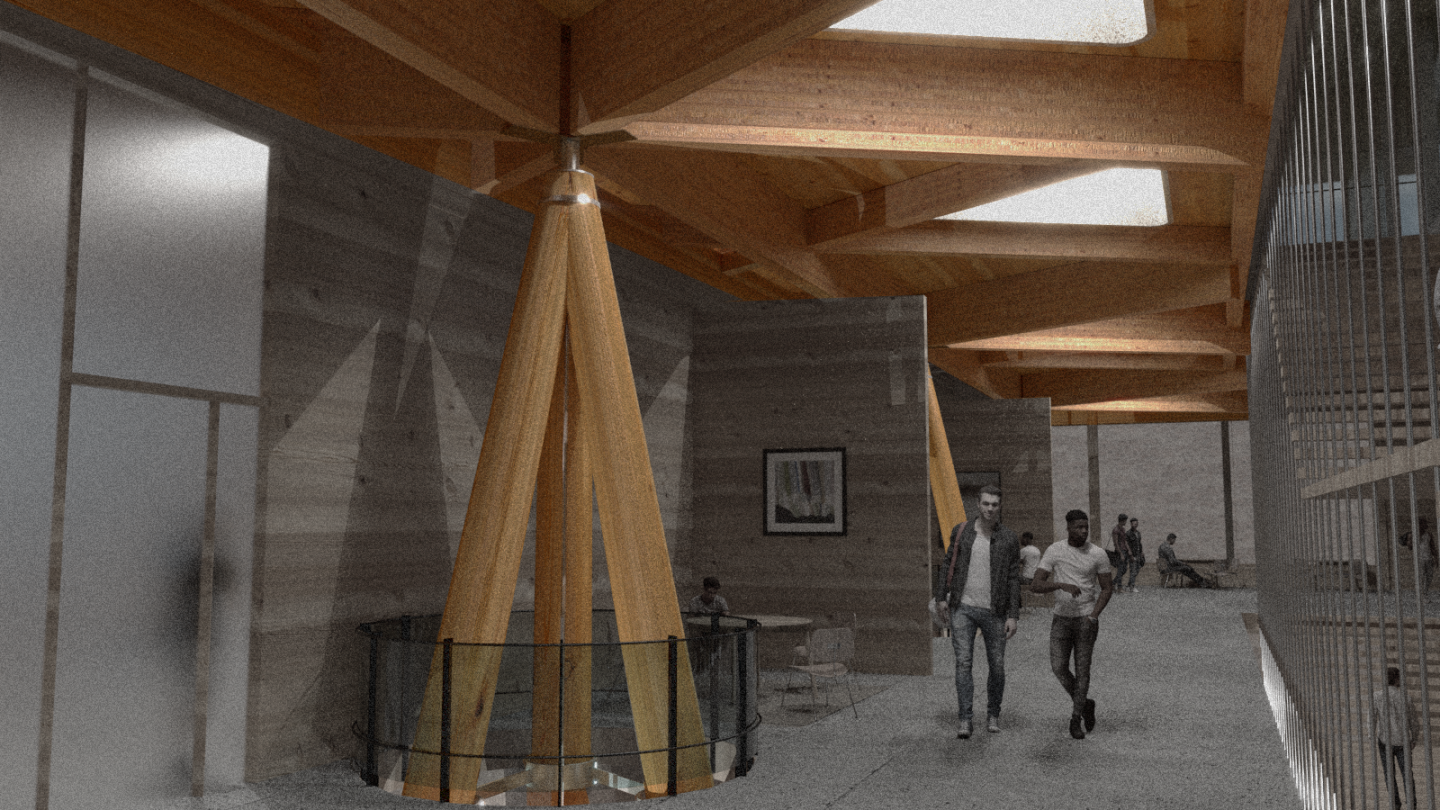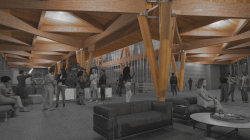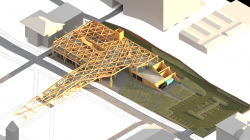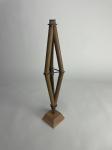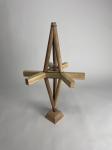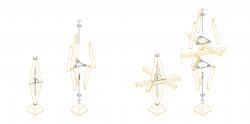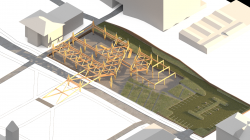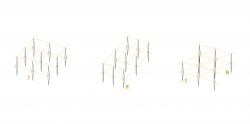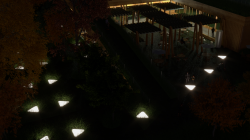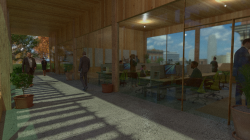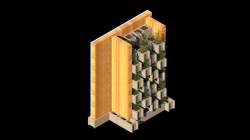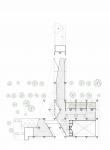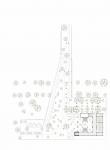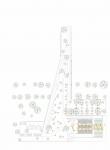Roundtimber Eco-Duct acts as a proposal for a Welcome Center on Georgia Institute of Technology's campus, and acts as both an outward facing representation of the innovative work completed at the university as well as a student occupied classrooms space. This is in an attempt to immediately ingrain visitors with the everyday goings-on of the student population. The project uses the AIA Framework for Design Excellence as a means to situate the design in the greater context of climate equity and honoring humanity, which the project accomplishes through a host of ecologically driven design principles.
Designed as part of research to create an optimized balance between embodied carbon and operational carbon, the Roundtimber Eco-Duct is a structurally experimental welcome center for prospective Georgia Tech students. Designed as a research studio project into low embodied carbon structural systems, the structural system takes inspiration from a thesis by Dr. Aurimas Bukauskas of MIT, who gave consultation on the feasibility of the system. Expanding on the work done by Dr. Bukauskas, variations on roundtimber compound columns that geometrically solved the issue of racking, were the driving force of spatial layout as well as the overall structural grid design, and digitally fabricated roundtimber models give experimental credence to the hypothetical embodied carbon calculations.
Cove.tool analysis shows a projected final EUI of -2.98, owing to the large scale insulative and habitat regenerative turf roof, as well as digitally fabricated roundtimber solar carports offsetting energy needs. The regenerative roof provides insulation as well as collecting rainwater and growth zones for native plants as well as the pollinators that coexist in these spaces.
Calculated to be a LEED Platinum project acheiving 87 points of 110, as well as a Living Building Certified project, local materiality is a driving force in acheiving these certifications. Sustainably managed Southern Yellow Pine tracts operated by the Georgia Forestry Foundation 60 miles south provide a carbon sequestering alternative to the carbon intensive usual practice of concrete construction.
The Roundtimber Eco-Duct combines all of these ecological strategies to seamlessly integrate visitors with the existing student population while giving a small taste of the innovative technological efforts being undertaken at the university.
2023
22,500 sq ft
46,000 sq ft of onsite permeable surface
18,100 sq ft of Monosilicate Solar Panels
87/110 LEED points
82/100 WELL points
Estimated 669,000 kilograms of Embodied Carbon (15.9kg per sqft)
Estimated -26,450 kilograms of Operational Carbon per year
Estimated time to become Net Carbon Negative: 25.29 years
Devin Lohman
Supervisor- Howard Wertheimer, FAIA
